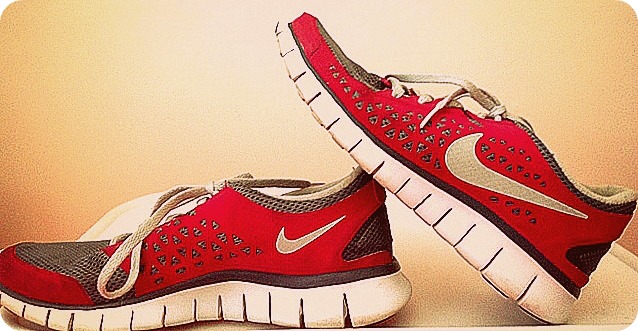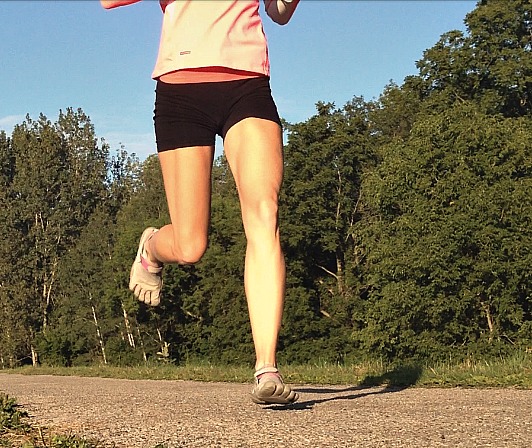The best shoes for forefoot running are ones that are ultra thin, with no compressible materials. Why?
The amount of shoe cushioning correlates to landing intensity whereby greater compressible materials elicit more forceful landings during running.
- A more forceful foot strike arises because the body tries to create a hard surface for better landing stability by pressing through the compressible materials.
- In a sense, the body is competing with the shoe to achieve stability, suggesting that shoe cushioning is anti-progressive for building better balance control in runners.
Robbins and Waked found that soft, plush shoe cushioning offers nothing but a ‘false sense of security”. The researchers reported the following:
- Runners who wore cushioned running shoes produced a higher vertical impact at touchdown because the soft material of the shoe was a destabilizing factor.
- The runners struck the ground harder, i.e. with higher vertical impact, to protect against falling because the shoe cushioning caused them to perceive each subsequent footfall as unstable.
Based on their results, cushioned running shoes act as an unfamiliar support surface and that barefoot conditions provide a more stable landing environment.

Why Thin Running Shoes Are Better
When it comes to stability optimization during forefoot running, the foot/ankle complex prefers landing on hard, not soft surfaces.
Thin running shoes optimize landing stability because there are less compressible materials between the foot and the ground.

The Take Home Message
Thinner running shoes improve neuromusular coordination that are otherwise impaired in cushioned running shoes. When selecting the best forefoot running shoe, make sure it doesn’t feel soft, foamy, or squishy.
Remember, the more cushioning in a shoe, the harder the foot strikes the ground to compress it! This evidence contradicts the scenario that shoe cushioning absorbs impact, but it doesn’t, it causes a runner to generate more impact.
2 Factors that Cause Leg Cramps in Runners
Ankle Injuries in Young Runners
2 Factors that Cause Plantar Fasciits from Running
Why Running Slow Causes Knee Pain
You Might Also Like:
Brooks Pure Running Shoes starting at $62.00 from Sun and Ski – Shop Now!
References:
Robbins SE and Waked E. Balance and vertical impact in sports: role of shoe sole materials. Arch Phys Med Rehabil, 1997; 78:463-7.
Bretta Riches
BSc Neurobiology; MSc Biomechanics candidate, ultra minimalist runner & founder of RunForefoot. I was a heel striker, always injured. I was inspired by the great Tirunesh Dibaba to try forefoot running. Now, I'm injury free. This is why I launched Run Forefoot, to advocate the health & performance benefits of forefoot running and to raise awareness on the dangers of heel striking, because the world needs to know.
Latest posts by Bretta Riches (see all)
- Does Foot Strike Really Matter in Running? YES! - 17/04/2024
- Heel Lifts Increase Injury in Runners - 16/04/2024
- Are Minimalist Shoes Good for Seniors? YES! - 14/04/2024

Leave a Reply